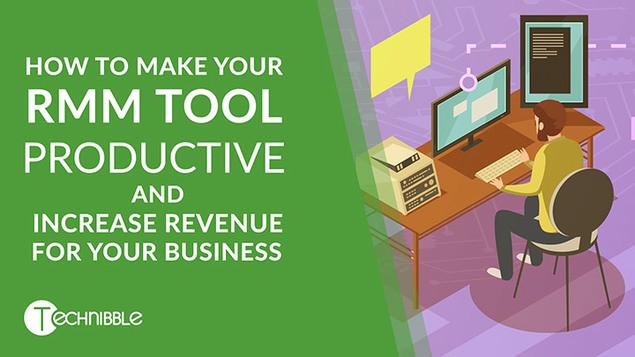
How to Make Your RMM Tool Productive and Increase Revenue for Your Business
If you don’t know what an RMM tool is, then you most likely don’t know what RMM means. So before we guide you on how to make the most of your RMM tool, let’s quickly learn what RMM is.
What is RMM?
RMM stands for Remote Monitoring and Management. You may also hear people refer to it as network management. It is essentially a platform to assist managed service providers (MSPs) remotely manage and monitor their client’s computers and networks. And as you can see, that means that RMM is all about two different things:
- Remote Monitoring
- Remote Management
So to truly know what is RMM, you need to understand both remote monitoring and remote management.
Remote Monitoring
Remote Monitoring (RMON) is where MSPs monitor their client’s network activities by using remote devices. These remote devices also go by the names probes and monitors.
Remote Management
Remote Management is when an MSP controls a client’s computer or network from a remote location. It requires the installation of software that allows the MSP to manage all network activities from a remote location.
RMM Tool
RMM is an essential tool for managed service providers. However, most managed providers just use RMMs as a reactive tool. Even though they can be used to generate revenue proactively.
The proactive revenue of an RMM hinges on the alerting ability of that particular RMM. Most RMMs have built-in monitors that will send alert emails once a threshold has been reached. If the alerting function of a particular RMM is not very stable or robust, scripts can be written to use 3rd party tools to check conditions and send emails if the condition requires attention.
So, what conditions are worth checking?
- Low disk space: This will either result in a tuneup to remove temp files, or the sale of a larger disk and labor to transfer data.
- Missing anti-virus: Depending on the service agreement, this may or may not be billable. Even if it is not billable, fixing the issue will show the customer the value of your service.
- SMART failures: While nothing will replace good backups, a workstation with a dead drive means downtime. The ability to prevent downtime (and potential data loss) is a very valuable skill and will result in the sale of a new drive and labor to clone the disk.
- Uptime: End users are normally not the best about rebooting workstations. As a result, un-rebooted workstations result in a bad end-user experience and a large number of tickets for preventable issues. This might not be a revenue generator on its own, but the workstation probably needs other maintenance which could be billable.
- Offline servers: RMMs can often alert if a certain amount of time has passed since a system was last checked. Using this function to monitor offline servers generates leads for billable work (normally labor for a one-time labor fix, or hardware replacement/upgrade).
Automated RMM Tool
RMM tools can automate most software-related tasks. This leads to the potential to add multiple tiers of service. The lower tier being monitoring only. And the premium tier could include automatically resolving software issues. Such as the automatic removal of temp files, or the installation of anti-virus). Automatic fixes can also cut down on the inevitable noise that alerting systems generate. They can often be integrated into the monitoring process in such a way that an alert is generated only if the automatic fix did not resolve the issue.
Not all RMM monitors are born equal. For the purpose of generating additional revenue from them, alerts should be used for mission-critical functions. Things like error logs, Windows services, performance, and temperature can be monitored. However, these alerts tend to be difficult to resolve simply, and they are equally difficult to bill for. As an example, Exchange servers can be monitored for backpressure. This alert is performance-related, and different factors contribute to the existence and severity of backpressure. While this may be an issue with the server, the time and effort it would take to research this issue, explain it to the customer, and then create a quote to fix it could most likely be better spent somewhere else.
Around the Clock RMM Tool
The subject of alerting will inevitably bring the question of 24/7 monitoring. This is relatively easy to set up with a 3rd party application (like PagerDuty). The question takes more of a business nature at this point. Someone will need to be alerted and thus paid for monitoring the alerts. This adds expense for the managed provider, so the customer will need to be billed for this service. On top of this, any work done after hours would likely be emergency work and billed accordingly. There is also the technical challenge of filtering out non-critical and false-positive alerts.
In closing, it is important to note that the ability to generate revenue from an alerting system depends on the accuracy of the alerting. Always take the time to tune the alerting so it does not generate a large number of false positives or multiple alerts for the same issue, as inaccurate alerts will be a drain of time and resources. However, if done correctly proactive alerting will increase revenue and customer relationships.
